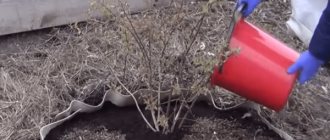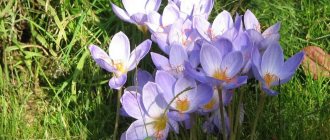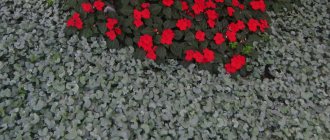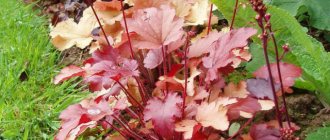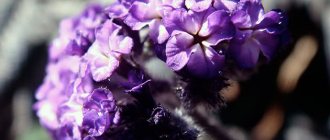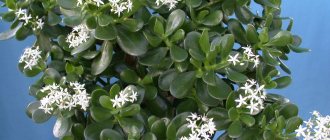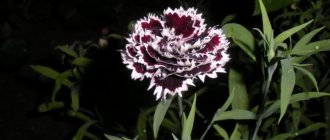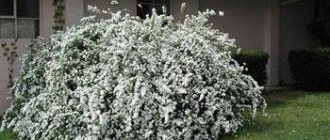An orchid in the garden is a rare and extraordinary phenomenon, and even more so as wonderful and bewitching as bletilla, which has a simply magical appearance. Many people think that such a perfect flower is difficult to care for. Unnecessary fears - the plant takes root in the gardens of regions with a temperate climate more easily than expected. Of course, bletilla cannot be classified as one of those perennials that they say - plant and forget. After all, she is an orchid, as befits these princesses of the plant world, and requires a certain respect for her person and, of course, the care of the florist.
Growing in open ground
This is a bulbous plant.
The Bletilla orchid can grow outdoors in warm climates. Where the temperature does not drop below 5 degrees. In the garden it needs non-calcified soil with good drainage. This orchid can also be grown in regular garden soil. But she will be more comfortable in special soil and soil mixtures for orchids. A mixture of leaf humus, lime and sand is also suitable. In the garden she needs a well-lit area. It is advisable to protect the plant from dampness and cold wind. This orchid also grows in central Russia, but it may have problems with flowering. You need to carefully choose a place for it. It should not be damp or flooded with melt water. The orchid must also be protected from frost. Therefore, it is better to dig up pseudobulbs for the winter. They are put in a dry place. In warmer climates, the plant is simply covered with dry leaves or covering material. It is better to plant orchids in groups.
The wilted flowers of the plant should be cut off.
Secrets of success
Bletilla needs a lot of light. Although the non-capricious orchid tolerates direct sunlight, in gratitude for the minimal shading it responds with longer and more abundant flowering.
Bletilla does not have any special requirements for humidity levels. When grown indoors, as opposed to being kept in a garden or on a balcony, rare spraying of the air around the flower is possible.
Bletilla absolutely does not tolerate flooded soil. Therefore, water the plant only after the soil has dried. It is necessary to have a good drainage layer in the pot. Occasionally, the flower is fed with a special fertilizer for orchids.
Normal room temperatures are completely suitable for Bletilla during active growth and flowering. The orchid overwinters in a cool place without feeding and with minimal watering. When growing outdoors/balconies, if the air temperature in winter drops below +5°C, the plant must be moved indoors or insulated. Otherwise, the death of peduncles formed in autumn results in a lack of flowering. However, leaf growth is not affected by hypothermia.
Bletilla orchid propagation
The Bletilla orchid is easy to propagate. The plant is usually propagated in the spring. Pseudobulbs are divided and planted first in small containers, and then in larger ones. Or into the ground. Keep the soil moist until the cuttings take root. It is important that there are 3-4 pseudobulbs on each division. It is advisable to sprinkle the cut part of the pseudobulb with antifungal powder.
An indoor orchid is replanted when the plant becomes cramped in the pot. She usually tolerates the transplant easily.
Care
Like all indoor ornamental plants, striped bletilla requires high-quality care: watering, fertilizing, treatment of pests and diseases. A garden orchid is subject to a greater number of factors that can affect the quality of its growth.
The amount of watering depends greatly on the temperature and soil conditions. The entire pot or basket is immersed in the settled water for 30 seconds, then left to dry.
The warm shower method is the most natural and effective for this plant. The flower is placed in the bathroom and watered with a watering can with light water pressure along the stem. This procedure improves growth rate, weight gain and flowering quality.
The ideal humidity level is 60 – 70%. You can control the level using a humidifier.
During the period of active growth, a large amount of nutrients is required - it’s time to increase care and apply mineral supplements. It is advisable to use specialized solutions. The frequency of fertilizing is 1 – 2 times a month.
Bletilla orchid care
Dormant period and watering
In summer, it is advisable to water the plant abundantly. In winter, reduce watering. The main thing is not to overdo it so that there is no rotting of the roots.
The plant needs a full rest period. In different species it occurs at different times. For many species this is June-August. Other species, on the contrary, bloom at this time. Watering is reduced, and the indoor plant is kept in a shaded and cool place. At this time, the orchid's leaves fall off. When the dormant period ends, you need to resume fertilizing and increase watering. And place the plant in a bright place.
Diseases and pests
The most common problem in growing bletilla is damage to plants by black rot, which occurs at low temperatures in conditions of excessive moisture. Even small foci of disease cannot be eliminated without losing plants. Consequently, upon discovering a diseased flower, it is destroyed immediately, and neighboring orchids are treated with Bordeaux mixture.
During wintering in regions with moderately cold winters, the plant may suffer from low temperatures, so it is covered with a thick layer of needles or fallen leaves, or a special covering material is used.
Snails and slugs, which love to gnaw on young roots, cause a lot of problems for bletilla plantings. Pests are collected manually, although you can pick up a remedy at a flower shop.
Young leaves and buds are often attacked by aphids. Massive colonies are destroyed by treating the plantings with a systemic insecticide.
Completely unpretentious in care, bletilla can become a worthy exotic decoration for a personal plot or a cool greenhouse.
Some Popular Types of Bletilla Orchid
- Bletilla striped or hyacinth Up to 70 cm tall. The flowers are pink or mauve. The most common variety. Suitable for breeding in temperate climates.
- Blettila is a brown-yellow low orchid with small flowers.
- Alba Variety with snow-white flowers.
- Albostriata Plant with white flowers striped with pink. Both of these varieties are rare.
( 9 votes, rating: 3.78 out of 5)
← Previous post
Next entry →
Description
The genus Bletilla from the Orchidaceae family includes less than a dozen species.
The enduring popularity of these terrestrial orchids is based on a combination of decorativeness and extreme ease of care. In cultivation, flowers are equally suitable for growing indoors, on balconies and in gardens. In landscape design, they are most often used to design alpine slides. Oval, slightly flattened pseudobulbs produce several elongated leaves. On the pointed leaf plates of a bright green color, longitudinal folds are clearly visible. The peduncle bears from 3 to 8 buds. They bloom one by one, turning into large flowers with a delicate aroma. Flowering lasts about a month. Usually the flowers are painted in lilac or pink tones; white, red, and yellow are less common.
The sepals and petals are very similar. The most “outstanding” element of the flower is the three-lobed lip, decorated with scallops. Raised up and curved side parts form a cylinder. The middle one is elongated and has a wavy edge.
When cut, the orchid does not fade within 2-3 weeks.
How to properly care for a plant
Several types of seedlings are common at home: Bletilla hyacinth, up to 70 cm high, with tuberous thickened growths. The flowers are large, the spike contains up to 8 buds. The ovary is bent.
If you look at the photo of brown-yellow bletilla, it is distinguished by its small size, a brush length of up to 40 cm, with small, classically shaped orchid inflorescences. The leaves are longitudinal, the stem is smooth, thickened.
Gardeners also use to decorate landscaped areas such types of bletilla as Alba, with snow-white blooms, and Albostriata, with pink striped inflorescences. Such species are rare in European countries.
Gardeners also use to decorate landscaped areas such types of bletilla as Alba, with snow-white blooms, and Albostriata, with pink striped inflorescences. Such species are rare in European countries.
We suggest you familiarize yourself with: Which green manure crops are best sown in the spring for tomatoes. Green manure for tomatoes Green manure in a greenhouse in spring for tomatoes
Oddly enough, caring for bletilla is much easier than other orchids, which are considered very whimsical and capricious to grow. However, bletilla also has its own preferences regarding various aspects of care - watering regime, fertilization, protection from diseases and pests, as well as preparation for wintering.
In summer, bletilla needs abundant watering, which should be gradually reduced towards winter. The main thing here is to prevent rotting of the root system. By the onset of the dormant period, watering must be significantly reduced, and the indoor plant must be moved to a dark and cool place. At this time, bletilla loses its leaves. At the end of the dormant period, the flower needs to increase the volume of watering and move it to a bright place.
During the flowering period, when watering, water should not get on the flowers, because they may begin to rot. Water the bletilla with a watering can, so the water will flow only to the root system. You will have to adjust the frequency of watering based on the degree of moisture consumption.
Bletilla needs to be fertilized during the period of its intensive growth. Twice a month it is necessary to apply a 0.01% solution of mineral fertilizer. During the dormant period, feeding is stopped.
Soil care
Since the root system of the flower is located close to the surface, it is impossible to loosen the soil in that place. Remember that even weeds should be pulled out very carefully so that the growth buds on the delicate roots of the orchid are not damaged. It would even be better to cut the weeds at the root without pulling them out. It may take more time and effort, but it's worth it.
The plant usually tolerates transplantation well. Carefully dig up the bletilla with a clod of soil, without touching the tender roots, or remove it from the pot with soil. If in the second case it is difficult for you to do this, then you can cut the pot, but without damaging the plant. Immerse the orchid and the earthen ball in a container with warm water until the soil is completely soaked.
Carefully wash away any remaining soil from the roots and remove all dead and damaged areas of the system. Sprinkle the cut areas with crushed charcoal. Place the bletilla on a paper or waffle towel until completely dry. Place a 5 cm drainage layer of expanded clay in the hole or pot. Fill the new prepared substrate on top and place the plant in it.
You can put a small peg to tie up hanging stems, if any. Sprinkle more substrate on top and press it down with your hand, or trample it down so that it settles if the orchid is being replanted in the garden. If bletilla grows indoors, the pot should be immersed in water for a couple of minutes and then allowed to drain. This way you will check the amount of substrate. If roots are exposed on the surface, it means you need to add more.
Latin name: Bletilla
Family: Orchids (Orchidaceae)
Genus: Contains five to ten species from East Asia; some of them are popular garden ornamental plants.
Name: The scientific name of the genus is formed by adding a diminutive suffix to the name of the American orchid genus Bletia Ruiz & Pav. - Bletia. Which, in turn, is named after the Spanish pharmacist and botanist Luis Blet, who lived in the 18th century. Representatives of these two genera are similar, while plants from the genus Bletilla are smaller.
Synonyms for the scientific name of the genus:
- Jimensia Raf.
- Polytoma Lour. ex Gomes
The standard genus abbreviation in ornamental horticulture is Ble.
Distribution: Plants of this genus are found in China, Japan, Vietnam, Myanmar, and also Taiwan.
Flowering: June - July
Description: Perennial low terrestrial herbaceous plants.
Pseudobulbs are dense, round, underground, slightly buried. Each pseudobulb produces several leaves in the spring.
The leaves are broadly lanceolate, longitudinally folded, green, sometimes variegated, soft, and can reach about half a meter in length.
Peduncles appear in warmer areas in late spring, in temperate areas in summer. The inflorescence is a raceme of few flowers. The length of the peduncles, depending on the type, is from 20 to 40 cm. The flowers are small, with a weak aroma, and have a classic orchid shape. Sepals are oblanceolate, elongated, petals are shortened, crescent-shaped. The color of the petals varies - from white to purple. The lip is wide, serrated, three-lobed, speckled. The side blades cover the column; the middle one protrudes forward or is arched backward. The column is thin, with narrow blades on each side. There are four pollinia.
Care: Plants are best placed in groups. In central Russia, for example near Moscow, bletilla is usually well preserved in open ground, but achieving abundant flowering is not easy: you need to choose a suitable place that is not damp and not flooded with melt water. It is advisable to mulch the plantings.
Lighting: A well-lit place protected from direct sunlight.
Watering: It is important to keep the soil moist in spring and summer.
Soil: Prefer fertile soil
Planting: Planted immediately after purchase to a depth of 5-10 cm. The distance between plants is 15 cm. It usually appears on sale in the spring.
Fertilizer: Fertilizer application (0.01% solution of complete mineral fertilizer) is carried out only during the active growing season.
Reproduction: By division in early spring and seeds. Reproduction is not difficult. Whole nests of pseudobulbs are formed shallow in the ground; they are separated and planted in groups of 3-4. first in small pots, and then transferred to larger containers.
Winter: In the south it winters well, even runs wild, without losing its decorative appearance. In spring, in the botanical gardens of Sukhumi and Yalta, you can admire the magnificent blooming arrays of bletilla. If plants are left in the ground for the winter, root feeding is required in the fall. In the conditions of the European part of Russia, pseudobulbs do not overwinter; for the winter they should be dug up and stored in a cool, dry place.
Growing in a greenhouse, at home: Unpretentious. They tolerate transplantation well. Most species are cultivated in cool rooms. The earth mixture is made up of equal parts of clay-turf, leaf litter, humus soil and 0.5 parts of coarse sand. Water moderately; during the dormant period (for most species this is July-August), watering is stopped completely, and the plants are kept in a cool, semi-shaded place. During the dormant period, the leaves completely fall off. Watering is resumed after dormancy ends.
Application: An excellent plant for a greenhouse or for an alpine hill. Plants from this genus are used in Chinese traditional medicine to stop internal bleeding and to reduce tumors. Dried bletilla roots are a common item in Asian markets and herbal shops.
Varieties and types
Bletilla striped, or hyacinth
(Bletilla striata (Thunb.) Reichb. = Bletia hyacinthina R. Br. = Bletilla hyacinthina (R. Br.) Reichb. f.)
A touching plant from China and southern Japan. Zone: 5 (6)-8. In Japan it is called shi-ran - purple orchid.
Plants are 30–70 cm tall. Rhizome with tuberous thickened annual growths. The aerial part is represented by leaves and peduncle. Long closed leaf sheaths form a rather tall (12-15 cm tall) false stem (with an inflorescence up to 45 cm tall). There are 3 lower sheaths, they are scaly and do not bear plates; the fourth has a small leaf-shaped bend; There are 3-4 true leaves, they are oblanceolate, pointed, with pronounced longitudinal folds, large, 20-30 cm long, green, without hairs or pubescence. The inflorescence is a rare spike of 1-8 flowers. The flowers are large, up to 3-4 cm long, bright, lilac-pink, with a delicate aroma. The bracts are petal-shaped, greenish-purple, falling off when the flowers open. Sepals oblanceolate, pointed; petals irregularly oblanceolate, obtuse. The lip is elongated-oval, three-lobed; the side lobes are raised upward, and their edges are turned inward, forming something like a tube; their outer ends are triangular, intensely colored, with a whitish edge; the middle lobe is slightly grooved, inside with 5-7 longitudinal curly-toothed whitish ridges, between the ridges longitudinally brownish-striped, and in the middle with many dark purple dots and specks; the outer edge of the middle lobe, together with the small middle notch, is dark purple. The column is straight, whitish at the bottom and purple at the top; the lower and middle parts are dotted with small brown strokes and dots. Pollinia in one pocket. The ovary is bent, not twisted.
It is known culturally in Japan, England, and Germany. In Russia, outdoor cultivation is possible on the Black Sea coast of the Caucasus and the southern coast of Crimea. When sheltered, it winters near Moscow. It does not bloom every year in cultivation. There is a variety 'Alba' with white flowers. In the Nikitsky Botanical Garden it blooms in early summer and blooms for almost a month, bearing fruit at the end of August.
Propagated by seeds and dividing the bush; grown in partial shade, on fairly moist, clay and loamy soils, including alkaline ones.
ochracea .
You can meet it in Taiwan, Vietnam, Japan, Myanmar and China. Representatives of this species are low perennial herbaceous plants with green, soft, sometimes variegated, longitudinally folded, broadly lanceolate leaves. The inflorescence is a few-flowered raceme with peduncles about forty centimeters in length. The flowers are small with the classic shape of orchids and have a weak scent.
Other species with indication of range:
- Bletilla chartacea (King & Pantl.) Tang & FTWang (1951). Northern Myanmar.
- Bletilla foliosa (King & Pantl.) Tang & FTWang (1951). Central and Southern China, northern Indochina.
- Bletilla formosana (Hayata) Schltr. (1911) - Bletilla taiwanis, or Bletilla formosan. Central and Southern China, Taiwan, Ryukyu Islands (Japan).
- Bletilla ochracea Schltr. (1913) - Bletilla brown-yellow. Central and Southern China, Vietnam.
- Bletilla striata (Thunb.) Rchb.f. (1878) - Bletilla striped. China, Japan. There is a variety Bletilla striata var. alba with white flowers.
Bletilla
Bletilla striped
Pseudobulbs with sprouts Bletilla striped Bletilla striped Bletilla brown-yellow Bletilla brown-yellow Bletilla formosana Bletilla

